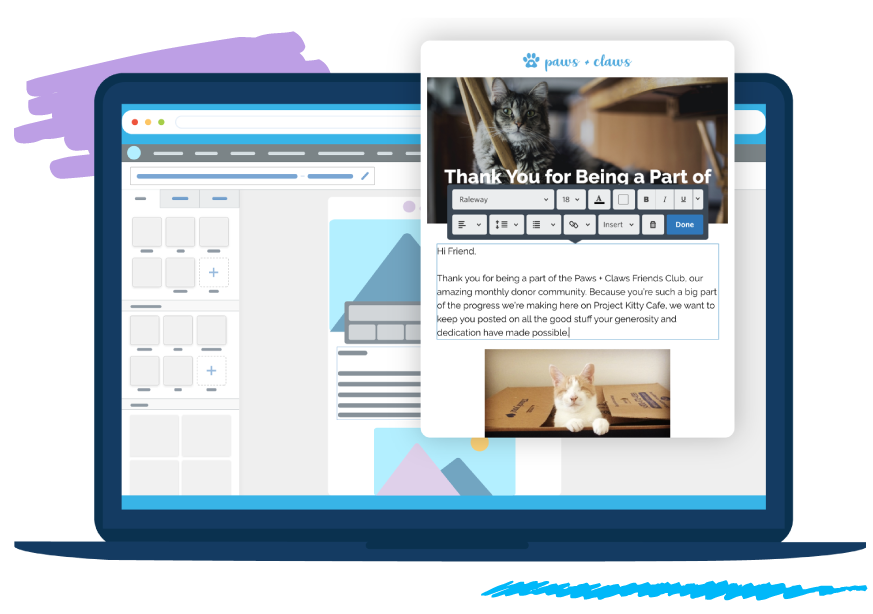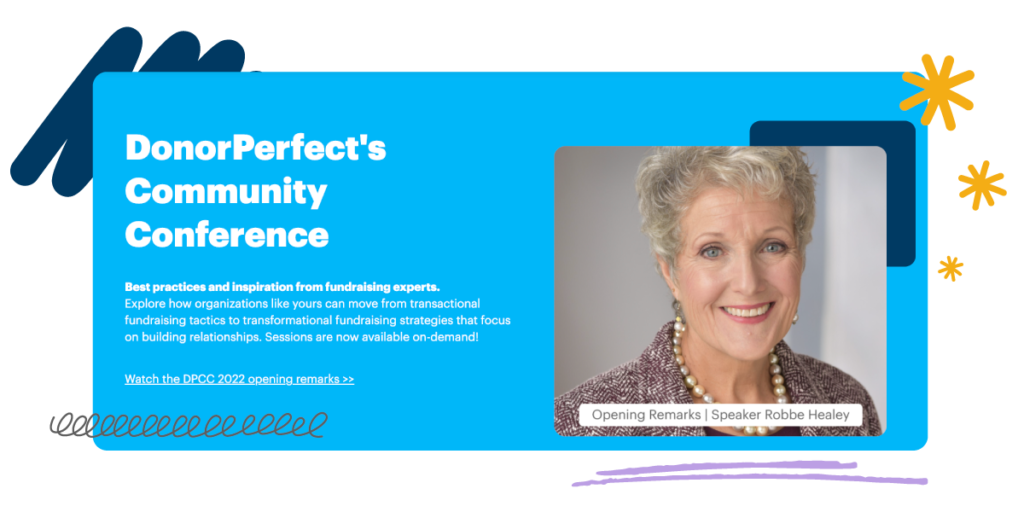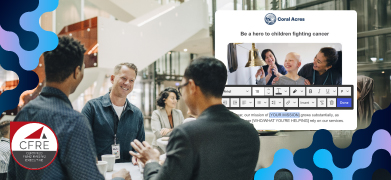We all know a good story when we hear one. Many of us even have that one that transports us. Maybe a certain series takes you back to your childhood bedroom reading with a flashlight. Or a novel takes you to a friend’s cozy living room for a book club discussion. So that begs the question, what story is your organization telling to your donors?
Is your nonprofit’s story engaging?
Are the stories told with passion?
Where and when should a story be told?
Having a clear voice and a plan for your organization’s story will help donors feel connected to your mission.
4 tips for using storytelling to multiply the impact of your nonprofit:
1. Make it personal
When names and descriptions are used in storytelling, the listener will begin to paint a picture of the characters in the story. It can be easy to rely on vague words to portray a broad stroke, but that can also make the listener disassociate with the reality of the situation. You want them to know the scenario is real, so the people in the story should be real.
- Don’t say: “Someone needs your help”
- Instead try: “Last week when Amanda arrived at the office, a single parent was there waiting for her. The parent’s name was Casey and they held hands with their 3 year old. With shy eyes and a quiet whisper, Casey simply asked “Can you help us?”
Sometimes stories are sensitive and names or details can not be directly used. Check out this resource on Telling sensitive, confidential, & anonymous stories with dignity.
2. Use details and statistics
In addition to specific personal information, a story becomes more real with facts. Using statistics to prove the need will cause the listener to grapple with the severity, depth, or urgency of a need.
- Don’t say: “Casey was struggling to find employment.”
- Instead try: “According to the United States Department of Labor, Austin is ranked third highest when it comes to unemployment. So, like many Austinites, Casey is having a hard time finding work – which translates to having a hard time providing basic needs for themselves and their family.”
3. Show the impact
Every story needs a good climax point. Why are you sharing this specific encounter? You want the listener to know something happened. Something changed. The only way to show change is to explain the impact.
- Don’t say: “So we gave Casey something to get them through the week.”
- Instead try: “Because of the generous donations to our organization, Casey came into the pantry that day and collected the essentials for the next week, including staples like granola bars and bread.”
4. End right
Depending on the purpose of this story, there are many ways to end. You want to be sure you are finishing well and maintaining the original intent of the message.
- Don’t say: “Thank you for giving to the cause!”
- Instead try: “Our nonprofit wants to thank you for your recent donation. You have cared for Casey without seeing their face. But we saw their face. As they left, Casey still had shy eyes, but those eyes were glistening with tears of gratitude and hope. They had food for the week. What a relief. Thank you.”

How to tell the story
Who: Anyone
Good news – you, fundraiser, don’t have to be the voice of every story! There are many options when it comes to narrators, and switching the perspective keeps storytelling interesting. Try one of these as the voice behind the story:
- A volunteer tutor sharing the story of a student’s face lighting up when that math concept finally clicked for them.
- A donor who finally got their hands dirty at the construction site and considered how each laid brick will come together to make a lifelong difference for a family.
- A newly hired mom who was nervous to go into the community center initially, but now has a job she loves because of the services offered.
- A sweet, excited puppy sharing about the moment they were taken to their new home for the first time.
Where: Anywhere
Stories of impact are incredibly powerful and important. These are the kind of things that can be shouted from a mountain top! But if you don’t have a mountain top to climb up on, start anywhere. Share a 30 second reel on Instagram from the program site. Interview a student on stage at your gala. Send your board an email with the story and ask them to forward it to ten people. An impactful story will speak for itself, as long as it is shared.
Looking for some tips on using social media to share your impact? We have 12 best practices for you to grow your social media presence now.
When: Anytime
Today is the day to start sharing stories of impact. Your donors and potential donors want to (and frankly, need to) hear what is happening in your community through the efforts of your nonprofit. You can share impact stories officially from your nonprofit’s social media platform or in your annual report, but you should also be prepared to share them at any moment. If you run into a donor in a grocery store, mentioning a timely story of impact will be a great way to remind them of the daily needs in your community. Powerful stories show that your nonprofit has a mission. What you’re doing matters and sharing these impact stories proves that.
Want to hear more about storytelling and your impact as a nonprofit? Check out the recordings from the 2022 DonorPerfect Community Conference: Stories Worth Sharing.

At DonorPerfect, we are passionate about stories. Need help sharing bite-sized stories on social media? We teamed up with digital fundraising expert Julia Campbell to guide your nonprofit’s social media content, available for free download below.







